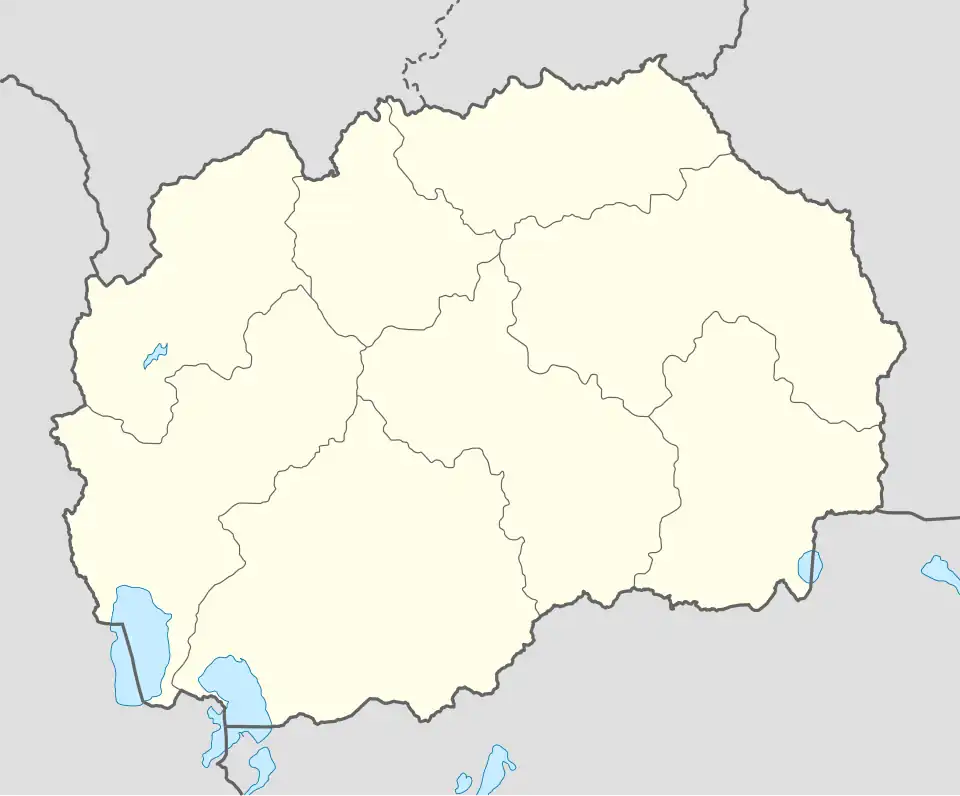Kolibari
Kolibari
Колибари Kolibarë | |
|---|---|
Village | |
 Kolibari Location within North Macedonia | |
| Coordinates: 41°34′N 20°58′E / 41.567°N 20.967°E | |
| Country | |
| Region | |
| Municipality | |
| Population (2021) | |
• Total | 355 |
| Time zone | UTC+1 (CET) |
| • Summer (DST) | UTC+2 (CEST) |
| Car plates | KI |
| Website | . |
Kolibari (Macedonian: Колибари, Albanian: Kolibarë) is a village in the municipality of Kičevo, North Macedonia. It used to be part of the former Zajas Municipality.
History
Kolibari contains two archaeological sites: Roman-era graves and a necropolis from the Middle Ages.[1]
During the period of 1912–1913, members of the Serbian army massacred a total of 6 Albanian men from the village. Communist Partisan forces later killed 5 more Albanians in 1944 and burned the village, leading to an outbreak of typhus that resulted in the deaths of 37 inhabitants.[2]
Demographics
As of the 2021 census, Kolibari had 355 residents with the following ethnic composition:[3]
- Albanians 338
- Persons for whom data are taken from administrative sources 17
According to the 2002 census, the village had a total of 742 inhabitants.[4] Ethnic groups in the village include:[4]
- Albanians 742
References
- ^ Dimče, Kočo (1996). Археолошка карта на Република Македонија. Skopje: MANU. ISBN 9789989101069
- ^ Hyseni, Safet (2007). Varrezat masive në Kërçovë dhe rrethinë. Kičevo: DEA. p. 68-, 145. ISBN 9789989143373.
- ^ Total resident population of the Republic of North Macedonia by ethnic affiliation, by settlement, Census 2021
- ^ a b Macedonian Census (2002), Book 5 - Total population according to the Ethnic Affiliation, Mother Tongue and Religion, The State Statistical Office, Skopje, 2002, p. 103.
External links